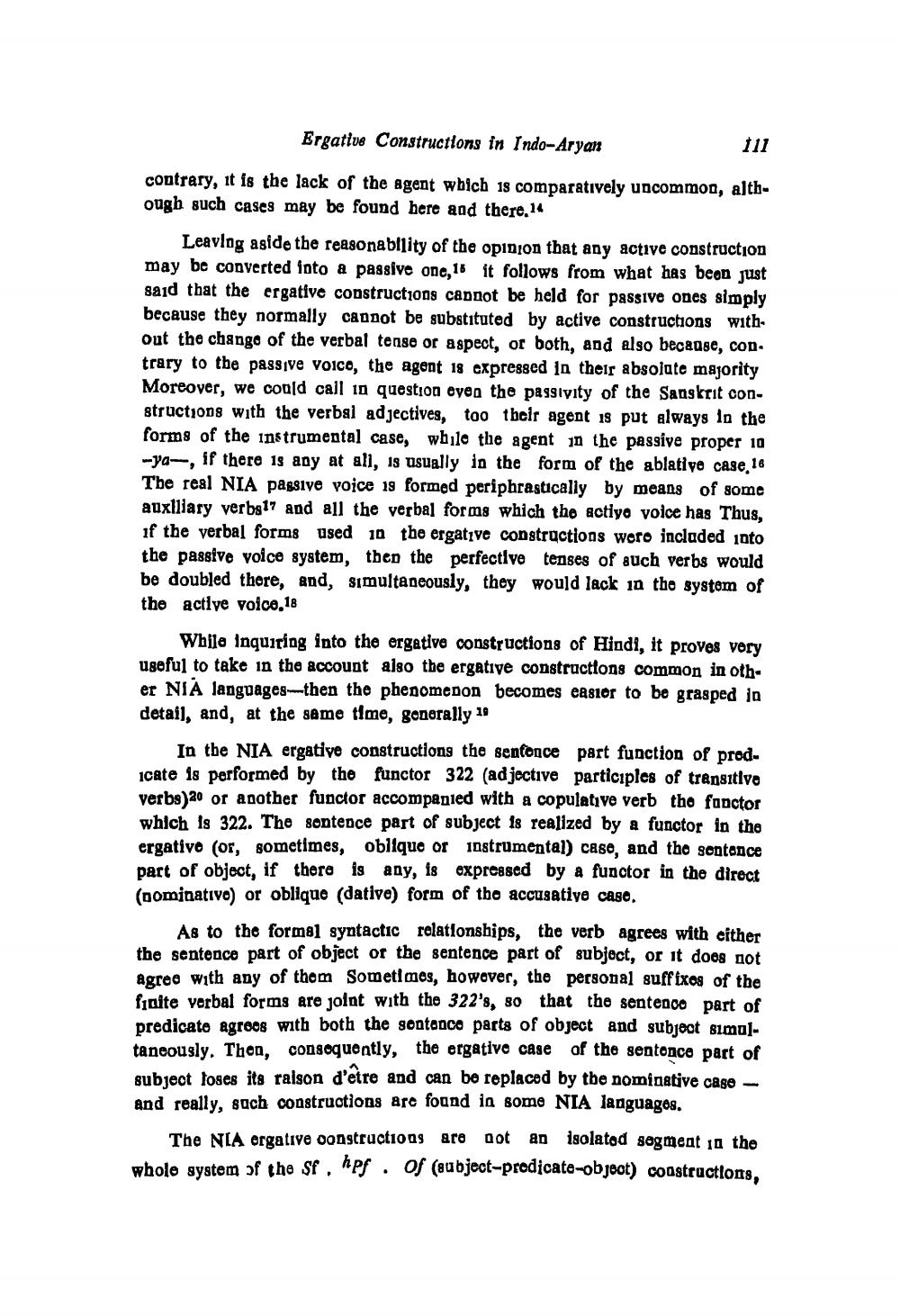________________
Ergative Constructions in Indo-Aryan
contrary, it is the lack of the agent which is comparatively uncommon, although such cases may be found here and there.14
111
Leaving aside the reasonabllity of the opinion that any active construction may be converted into a passive one, 15 it follows from what has been just said that the ergative constructions cannot be held for passive ones simply because they normally cannot be substituted by active constructions without the change of the verbal tense or aspect, or both, and also because, con. trary to the passive voice, the agent 18 expressed in their absolute majority Moreover, we could call in question even the passivity of the Sanskrit constructions with the verbal adjectives, too their agent is put always in the forms of the instrumental case, while the agent in the passive proper 10 -ya-, if there is any at all, is usually in the form of the ablative case, 16 The real NIA passive voice is formed periphrastically by means of some auxiliary verbs17 and all the verbal forms which the active voice has Thus, if the verbal forms used in the ergative constructions were included into the passive voice system, then the perfective tenses of auch verbs would be doubled there, and, simultaneously, they would lack in the system of the active voice,18
While inquiring into the ergative constructions of Hindi, it proves very useful to take in the account also the ergative constructions common in other NIA languages-then the phenomenon becomes easier to be grasped in detail, and, at the same time, generally 10
In the NIA ergative constructions the sentence part function of prodicate is performed by the functor 322 (adjective participles of transitive verbs)20 or another functor accompanied with a copulative verb the functor which is 322. The sentence part of subject is realized by a functor in the ergative (or, sometimes, oblique or instrumental) case, and the sentence part of object, if there is any, is expressed by a functor in the direct (nominative) or oblique (dative) form of the accusative case.
As to the formal syntactic relationships, the verb agrees with either the sentence part of object or the sentence part of subject, or it does not agree with any of them Sometimes, however, the personal suffixes of the finite verbal forms are joint with the 322's, so that the sentence part of predicate agrees with both the sentence parts of object and subject simultaneously. Then, consequently, the ergative case of the sentence part of subject loses its raison d'être and can be replaced by the nominative case— and really, such constructions are found in some NIA languages.
The NIA ergative constructions are not an isolated segment in the whole system of the Sf. hpf. Of (subject-predicate-object) constructions,




